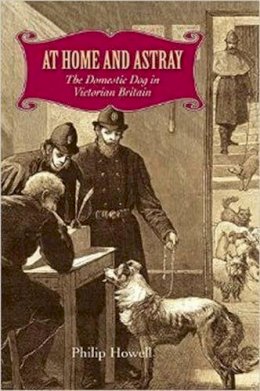
Stock image for illustration purposes only - book cover, edition or condition may vary.
At Home and Astray: The Domestic Dog in Victorian Britain
Philip Howell
€ 61.90
FREE Delivery in Ireland
Description for At Home and Astray: The Domestic Dog in Victorian Britain
Hardcover. Num Pages: 256 pages, black & white illustrations. BIC Classification: WNGD. Category: (G) General (US: Trade). Dimension: 229 x 152 x 20. Weight in Grams: 499.
Although the British consider themselves a nation of dog lovers, what we have come to know as the modern dog came into existence only after a profound, and relatively recent, transformation in that country’s social attitudes and practices. In At Home and Astray, Philip Howell focuses on Victorian Britain, and especially London, to show how the dog’s changing place in society was the subject of intense debate and depended on a fascinating combination of forces even to come about.
Despite a relationship with humans going back thousands of years, the dog only became fully domesticated and installed at the heart of the middle-class home in the nineteenth century. Dog breeding and showing proliferated at that time, and dog ownership increased considerably. At the same time, the dog was increasingly policed out of public space, the ""stray"" becoming the unloved counterpart of the household ""pet."" Howell shows how this redefinition of the dog’s place illuminates our understanding of modernity and the city. He also explores the fascinating process whereby the dog’s changing role was proposed, challenged, and confronted—and in the end conditionally accepted. With a supporting cast that includes Charles Dickens, Elizabeth Barrett Browning, Thomas Carlyle, and Charles Darwin, and subjects of inquiry ranging from vivisection and the policing of rabies to pet cemeteries, dog shelters, and the practice of walking the dog, At Home and Astray is a contribution not only to the history of animals but also to our understanding of the Victorian era and its legacies.
Despite a relationship with humans going back thousands of years, the dog only became fully domesticated and installed at the heart of the middle-class home in the nineteenth century. Dog breeding and showing proliferated at that time, and dog ownership increased considerably. At the same time, the dog was increasingly policed out of public space, the ""stray"" becoming the unloved counterpart of the household ""pet."" Howell shows how this redefinition of the dog’s place illuminates our understanding of modernity and the city. He also explores the fascinating process whereby the dog’s changing role was proposed, challenged, and confronted—and in the end conditionally accepted. With a supporting cast that includes Charles Dickens, Elizabeth Barrett Browning, Thomas Carlyle, and Charles Darwin, and subjects of inquiry ranging from vivisection and the policing of rabies to pet cemeteries, dog shelters, and the practice of walking the dog, At Home and Astray is a contribution not only to the history of animals but also to our understanding of the Victorian era and its legacies.
Product Details
Format
Hardback
Publication date
2015
Publisher
University of Virginia Press
Condition
New
Number of Pages
256
Place of Publication
Charlottesville, United States
ISBN
9780813936864
SKU
V9780813936864
Shipping Time
Usually ships in 15 to 20 working days
Ref
99-99
About Philip Howell
Philip Howell, Senior Lecturer in Geography at Cambridge University, UK, is the author of Geographies of Regulation: Policing Prostitution in Nineteenth-Century Britain and the Empire.
Reviews for At Home and Astray: The Domestic Dog in Victorian Britain
